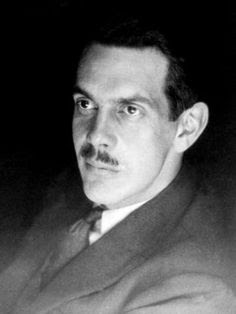1889-1967
Silent Australian actor (and sometimes director) Arthur Shirley (not to be confused with the silent British actor of the same name) was born Henry Raymond Shirley on this day in Hobart, Tasmania, Australia. Though born Henry, he was christened Arthur. He attended Catholic schools on the island and went to work as a young man, eventually becoming a clerk to a solicitor. He was, however drawn to entertainment, and at the age of 16 basically "ran away to the circus" when he joined a traveling troupe of entertainers touring the area with a very modest caravan. By 1904 he are relocated to Melbourne on the mainland and worked as a door to door salesman, enrolling later on in a seminary to Sydney. Again, in 1905, he absconded to the entertainment industry, becoming involved in a theater. He made his stage debut that same year back in Melbourne. He spent the next two years as an actor in a company touring New South Wales and Victoria. He then got involved with a couple of theater entrepreneurs, the first indication that he had some prowess as a salesman (obviously a hold over from his Melbourne days). By 1909 he made a rather dramatic annoucedment that he would starring in a theatrical role written especially for him--though none of this has ever been confirmed. It is known, that by 1913, he owed a considerable sum to at one individual--a woman known only as Miss Tindall--and declared bankruptcy by the end of the year. His struggles with finances dogged him into the year 1914, the same year that he finally broke into the motion picture business. He landed a named role in The Silence of Dean Maitland (1914). This was quickly followed by The Shepherd of the Southern Cross (1914)--now a lost film--in which he had the starring role. (Note: he is often mistaken for the other Arthur Shirley in the British film from 1913 Sixty Years a Queen from 1913) Both films were successes, though Maitland, much more so. Shirley was still burdened by financial difficulties however; one of which resulted in his bringing suit against an employer and winning the case. The money that he was awarded allowed him to settle his debts, but he felt that Australia had nothing further to offer him in regards to his acting ambitions. In late 1914, he and his new wife, relocated to the United States and he was put under contract at Kalem in New York, where he apparently starred as a detective in a recurring role (I can find little information about this time in his life). He eventually wound up at Universal in California where he starred in several films featuring Lon Chaney Sr. He also had a role in the propaganda sequel to Birth of a Nation The Fall Of A Nation in 1916. He also ran his own business on Hollywood Blvd.--a photographic business that provided innovative photographic lighting solutions and specialized background pieces for photographic portraiture. He continued to work in the American film industry for the rest of the 1910's (which comprised the bulk of his film acting career). The last film that he made at Universal was The Triflers in 1920. That same year, he returned to Australia. Upon his return, he set up his own production studio, the venture ended with no films completed and sent Shirley again into bankruptcy. He managed to recover enough to return to the stage in 1923 and to film acting in 1925 with The Mystery Of The Hansom Cab, a film that he wrote and directed. He also wrote and directed The Sealed Room the following year. In 1927, he relocated to London with the notion that he would promote his Australian films there and set a facility to make more. This did not turn out according to plan; and again, the culprit was money woes. By 1930, he was back in Hollywood; returning to Australia in 1934. In the interim, he had managed to eek out a small role in a short early talkie in California in 1931: The Champion. He showed up in only two other roles during his brief time back in the U.S., both uncredited; the second of which would mark his last involvement in the film industry--the film was Pursued (1934), a Fox Film production. He briefly got into politics in the 1940's, but spent most of the rest of his retirement either quietly in Australia or pursuing passions in archeology and ancient Egyptian interests. Shirley died on the 24th of November in Rose Bay, New South Wales, Australia at the age of 81 and is buried in the Rose Bay cemetery there.
 |
| Poster for Alas And Alack (1915) a Hollywood production that Shirley acted in with Lon Chaney Sr. |
IMDb
Wikipedia




































